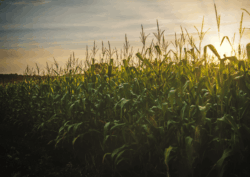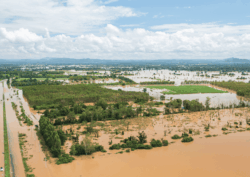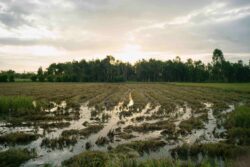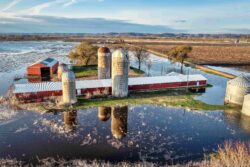Agricultural flooding poses an increasingly serious threat to global food security. As extreme weather events become more frequent due to climate change, croplands suffer significant losses, directly impacting food availability and the economic stability of rural communities. This escalating phenomenon demands immediate attention and concrete strategies to reduce its impact.

Immediate Effects on Crops and Soils
Crop Loss
One of the most visible consequences of flooding is the direct loss of crops. When water inundates farmland, it disrupts plant growth and, in many cases, suffocates the crops—resulting in total loss. This leads to major financial setbacks for farmers, who lose not only their yields but also their upfront investments.
Water Erosion
Floodwaters can strip away topsoil, which is rich in organic matter and essential nutrients. This erosion significantly reduces soil fertility and impairs productivity in future planting cycles. Restoring soil health takes time, technical support, and considerable financial resources—which can be especially challenging for smallholder farmers.
Contamination of Water and Soil
Floods often carry waste, agrochemicals, and pathogens into agricultural areas. The introduction of these harmful substances contaminates the food chain, putting both crops and consumers at risk. In addition, it disrupts the biological balance of the soil, hindering its regeneration and lowering productivity in the long term.
Fungal and Bacterial Diseases
Waterlogged conditions create a breeding ground for fungal and bacterial outbreaks. Excess moisture displaces soil oxygen, suffocating roots and facilitating infections such as root and stem rot. This weakens nutrient uptake, undermines plant health, and, in severe cases, leads to full crop failure.
Long-Term Consequences

Shifting Planting Patterns
After severe flooding, many farmers must reconsider what, how, and when to plant. Some species are intolerant to excess moisture or altered soil conditions, forcing adjustments to planting calendars or the adoption of more resilient varieties. While necessary, these changes can reduce income and limit genetic diversity in agricultural systems.
Economic Disruption in Rural Areas
Damage to the agricultural sector has a direct impact on rural economies. Reduced output leads to food shortages, rising prices, and declining purchasing power. In regions heavily dependent on farming, flooding can result in job losses and intensify poverty.
Rural Displacement and Migration
When farmland becomes unproductive, many families are forced to leave rural areas in search of better opportunities. This migration erodes the social fabric of agricultural communities and leads to the loss of traditional knowledge essential for sustainable, adaptive farming.
Strategies to Mitigate Flood Impacts

Adaptive Infrastructure
Investing in flood-control infrastructure—such as levees, drainage systems, retention basins, and diversion canals—tailored to regional conditions is essential to minimizing agricultural damage.
Sustainable Agricultural Practices
Implementing agroecological techniques, crop rotation, and the use of flood-tolerant varieties helps preserve soil health and increase resilience against future floods.
Farmer Training and Education
Ongoing training in water management, adaptive crop selection, and mitigation strategies are vital for reducing losses and maintaining long-term productivity.
Climate Change and Flooding: The Need for Multisectoral Action

The increased frequency and intensity of floods are directly linked to climate change. Heavy rainfall, rising sea levels, and extreme weather events are affecting areas once considered low-risk, exposing agriculture to growing hazards.
Farmers alone cannot bear the responsibility for addressing this crisis. A coordinated response involving governments, NGOs, academia, rural communities, and international bodies is essential. Investment in research, the development of climate-resilient crops, predictive climate models, and early warning systems will play a key role in reducing future risk.
At the same time, rural communities bring invaluable traditional knowledge. Integrating local practices with modern technologies strengthens agricultural resilience. Encouraging community-based networks and knowledge sharing is key to ensuring a fast, coordinated response to future flooding events.
Flooding is increasingly disrupting agricultural production worldwide, posing a serious threat to food security and rural development. Strengthening public policies, investing in resilient infrastructure, and expanding technical training are fundamental steps toward protecting the sector.
Safeguarding food systems in the face of natural disasters requires integrated, sustainable, and climate-adapted solutions. Acting now is critical to reduce damage, support rural economies, and ensure food for current and future generations. Discover how you can contribute to sustainable flood solutions.





 (956) 574-8280
(956) 574-8280 info@ferti-organic.com
info@ferti-organic.com